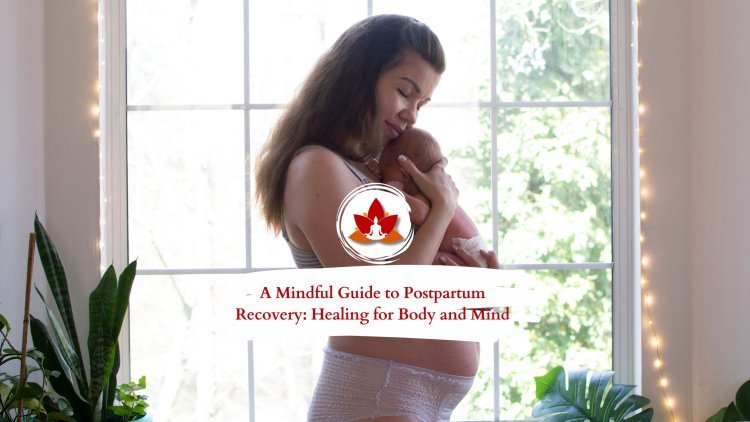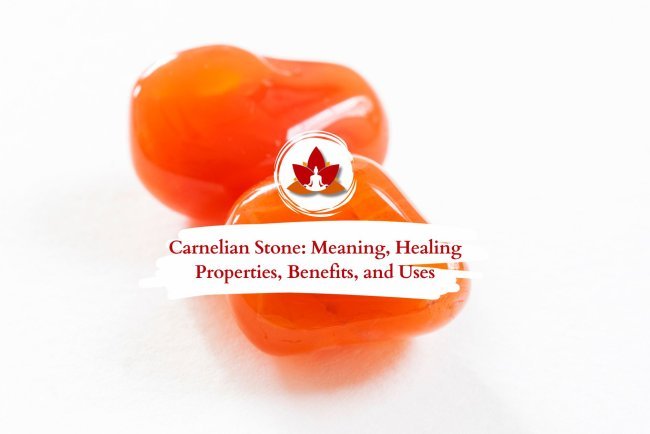A Mindful Guide to Postpartum Recovery: Healing for Body and Mind

Having a new baby is a life-changing experience, but one of the greatest challenges is navigating postpartum recovery. Every mother experiences this phase differently, requiring both physical and emotional healing. After giving birth—whether through vaginal delivery or c-section—your mind and body begin an intensive healing journey. But how long does postpartum recovery actually take, and what should you be doing during this crucial time?
Many new mothers find comfort in structured recovery approaches, such as the popular 5-5-5 postpartum recovery guideline, which encourages gentle rest and gradual movement in the first weeks after childbirth: five days in bed, five days on the bed, and five days around the bed. This method helps reduce physical strain while allowing time for emotional and mental adjustment.
In this supportive guide, you’ll explore what postpartum recovery truly feels like, understand realistic timelines based on different types of delivery, and learn evidence-based self-care strategies that nurture both your body and mind—without pressure, guilt, or unrealistic expectations.
What is Postpartum Recovery?
Postpartum recovery is the period of physical and emotional healing that begins immediately after giving birth. During this time, your body undergoes a gradual transition as it returns to its pre-pregnancy state. Every woman’s postpartum recovery journey is unique—what one mother experiences may be completely different from another.
This phase is not just about physical healing but also about adjusting emotionally to life with a newborn. It’s essential to listen to your body, move at your own pace, and seek support when needed. By understanding what to expect during postpartum recovery, you can navigate this significant life transition with greater confidence, comfort, and care.
What Are the Three Phases of Postpartum?
Medical professionals categorize the three phases of postpartum into distinct periods: the acute phase, the subacute phase, and the delayed phase. Each stage plays a critical role in the mother’s physical and emotional recovery after childbirth.
1. Acute Phase
The acute phase covers the first 6 to 12 hours after delivery. This is when mothers are at the highest risk for complications such as postpartum hemorrhage, eclampsia, or other medical emergencies. During this time, healthcare providers closely monitor vital signs like blood pressure, heart rate, bleeding, and swelling to ensure stability.
2. Subacute Phase
The subacute phase begins 24 hours after birth and extends up to two to six weeks. Although the immediate risk of emergencies lowers, the body is still undergoing significant changes. Common concerns during this period include postpartum depression, cardiomyopathy, urinary incontinence, and healing from tears or C-sections. Continuous medical checkups and emotional support are vital during this phase.
3. Delayed Phase
The delayed phase spans from six weeks to six months postpartum. This stage involves long-term healing as muscles, tissues, and hormones slowly return to their pre-pregnancy state. Mothers may face challenges such as pelvic floor dysfunction, uterine prolapse, or discomfort during intimacy. Addressing these concerns with proper care, physical therapy, or counseling is an essential part of full postpartum recovery.
What Are Normal Symptoms of Postpartum?
During the postpartum stage, your body and mind go through major changes. Many of these shifts occur naturally due to hormonal fluctuations. The symptoms of postpartum can be physical, emotional, or both.
Physical Signs and Symptoms of Postpartum
Physical symptoms of postpartum affect your body’s appearance, functions, and sensations. Here are the most common physical changes:
-
Perineal soreness and pain: The perineum (the area between the vagina and anus) often stretches or tears during vaginal delivery. It can feel swollen, tender, and sore for weeks. Relief methods include using a pillow when sitting, applying cold packs, and rinsing with warm water.
-
Vaginal discharge (Lochia): Lochia is normal postpartum bleeding, even after a C-section. It starts bright red, turns brown, and eventually fades to light discharge over six weeks. Use pads—not tampons—during this time.
-
Uterus involution: This is the process of your uterus shrinking back to its pre-pregnancy size. It begins immediately after birth and may involve cramping, especially while breastfeeding, and typically resolves within six weeks.
-
Breast engorgement and nipple pain: Swollen, painful breasts are common for a few days postpartum, especially when breastfeeding starts. Cracked nipples may occur and consulting a lactation expert can be helpful.
-
Postpartum sweating: Hormonal shifts cause night sweats or excessive sweating, particularly in the first week. This is a normal symptom of postpartum recovery.
-
Constipation: Slowed bowel movements are common after delivery, particularly with an epidural or C-section. Stool softeners and hydration can help manage this, along with hemorrhoids.
-
C-section recovery: Healing from a C-section takes about 10 days for the skin and up to 12 weeks for deeper tissues. Watch for infection signs like fever, pus, or redness around the incision.
-
Hair loss: Hormonal changes cause postpartum hair shedding, which typically normalizes after a few months.
Emotional Symptoms of Postpartum
Emotional symptoms of postpartum affect mood, mental health, and self-image. These are common emotional experiences:
-
Baby blues: Feeling tearful, overwhelmed, or moody within the first couple of weeks after birth. This typically resolves on its own.
-
Postpartum depression: A more serious mood disorder that brings persistent sadness, hopelessness, and emotional numbness. Unlike baby blues, it doesn’t resolve without professional help.
-
Postpartum anxiety: Excessive worrying, restlessness, racing thoughts, and physical symptoms like insomnia or a racing heart. It often coexists with postpartum depression and requires therapy or medication.
-
Body image and weight changes: Experiencing loose skin, stretch marks, and concerns about body weight is normal. Expect an initial weight drop of 10 to 20 pounds shortly after delivery. Focus on nourishment, gentle movement, and giving yourself grace during this period.
What Are the Postpartum Complications?
Several medical conditions can arise after childbirth, ranging from mild to severe. While some discomfort and symptoms are expected, certain issues may indicate serious postpartum complications that require immediate medical attention. This is why your healthcare team closely monitors you during the hours and days following delivery.
Here are some of the most serious postpartum complications to be aware of:
-
Postpartum hemorrhage: Excessive bleeding after giving birth can be life-threatening if not treated promptly.
-
Postpartum preeclampsia: High blood pressure that develops after delivery, sometimes accompanied by headaches, swelling, or visual disturbances.
-
Deep vein thrombosis (DVT): Blood clots that typically form in the legs but can become dangerous if they travel to the lungs.
-
Pulmonary embolism: A life-threatening condition where a blood clot travels to the lungs, causing sudden chest pain, difficulty breathing, or rapid heart rate.
-
Severe mental health conditions: This can include postpartum psychosis, postpartum rage, or extreme mood disturbances. These are medical emergencies that require urgent psychiatric care.
-
Sepsis: A serious infection that spreads into the bloodstream, potentially causing widespread inflammation and organ failure.
Listen to Your Body
The best way to safeguard yourself from severe postpartum complications is to trust your instincts. If something feels wrong—whether physically or emotionally—contact your healthcare provider immediately. You don’t need to wait until your scheduled postpartum checkup. Any concerns, whether big or small, deserve prompt attention.
Postpartum Recovery Timeline
Your postpartum recovery journey is unique, influenced by factors such as delivery type, overall health, and personal circumstances. It's important to prioritize self-care and be gentle with yourself. If you're ever concerned about your healing process, consult your healthcare provider for reassurance and advice.
1–2 Weeks After Giving Birth
-
Physical Recovery: Healing begins in these first two weeks. Expect soreness, especially if you experienced a c-section, tearing, or an episiotomy. Lochia (bleeding after childbirth) is completely normal but monitor it closely. If bleeding becomes unusually heavy or smells foul, contact your provider immediately.
-
Emotional Shifts: Emotional highs and lows are common. Feeling overwhelmed, tearful, or experiencing the "baby blues" is completely normal during this period. Don’t hesitate to ask for help from family, friends, or professionals.
-
Breastfeeding Challenges: Many new mothers face breastfeeding hurdles, including sore nipples, engorgement, or latching difficulties. Reach out to a lactation consultant for support and guidance.
3 Weeks After Giving Birth
-
Mood Fluctuations: Emotional ups and downs may persist. Continue to monitor your mental health. If sadness, anxiety, or hopelessness become overwhelming, seek professional help to screen for postpartum depression or anxiety.
-
Sleep Deprivation: Adjusting to your newborn’s unpredictable sleep patterns can be exhausting. Prioritize rest when the baby sleeps and don’t hesitate to ask for help with household tasks.
-
Physical Recovery Progress: Gentle physical activity, such as pelvic floor exercises, becomes increasingly important. If you had a c-section, continue to care for your incision site and follow your doctor's advice for wound care and movement limitations.
6 Weeks Postpartum
-
Postpartum Checkup: Around six weeks, you’ll likely have a postpartum check-in with your healthcare provider. This visit will assess your physical recovery, emotional well-being, breastfeeding, contraception options, and any lingering concerns.
-
Physical Healing: By now, most women feel significantly stronger. Postpartum bleeding typically ends, and your uterus has returned close to its pre-pregnancy size. However, everyone heals at their own pace.
-
Resuming Activities: You may start easing back into regular activities, light exercise, or intimacy, depending on how your body feels and your provider’s advice. Listen to your body—rest when needed and avoid rushing the process.
Warning Signs to Watch For During Postpartum Recovery
While most symptoms during postpartum recovery are normal, it’s crucial to recognize when something might not be right. Pay close attention to your body, and contact your healthcare provider immediately if you experience any of the following warning signs:
-
Severe vaginal bleeding: This typically means soaking through one pad per hour for several consecutive hours. Bleeding should gradually decrease over time, not increase.
-
Passing multiple large clots: Passing a clot larger than a quarter is concerning, especially if it happens more than once.
-
Fever over 38°C (101°F): A persistent fever can signal an infection and should be addressed promptly.
-
Sudden or worsening pain: While discomfort is expected, pain should improve over time, not intensify.
-
Foul-smelling vaginal discharge: This may indicate an infection in the uterus or reproductive tract.
-
Leg or ankle pain with swelling: These symptoms may point to a serious condition like a blood clot (deep vein thrombosis).
-
C-section wound issues: Look for signs of infection, including pus, redness, swelling, or draining blood from the incision site.
-
Dizziness, fainting, or blurred vision: These could be symptoms of blood loss, high blood pressure, or other serious complications.
-
Severe or persistent headaches: This can be a warning sign of postpartum preeclampsia or blood pressure issues.
-
Chest pain or difficulty breathing: These are emergency symptoms that could indicate a pulmonary embolism or cardiac concern.
What is the 5-5-5 Rule in Postpartum Recovery?
One of the most effective approaches to ease into postpartum recovery is by following the 5-5-5 rule. This simple yet powerful guideline is rooted in traditional postpartum care and gives new mothers the much-needed permission to rest—without the pressure to "bounce back" immediately.
What is the 5-5-5 Rule for Postpartum?
-
5 days in bed: Spend the first five days primarily lying in bed. This time allows your body to begin physical healing, promotes deep bonding through skin-to-skin contact, and helps you recover from birth—whether vaginal or C-section.
-
5 days on the bed: During the next five days, stay close to the bed. You can engage in light seated activities such as breastfeeding, journaling, or enjoying brief visits from supportive family and friends. While you’re more upright, rest remains the priority.
-
5 days near the bed: This final phase involves gentle movement, like short walks around your home, preparing a simple snack, or light tidying. You're slowly reintegrating into daily life but still prioritizing recovery.
Why the 5-5-5 Rule Matters in Postpartum Recovery
The 5-5-5 rule postpartum isn’t rigid—it’s a helpful reminder that recovery takes time. Whether you experienced a vaginal birth, C-section, or faced complications, the 5-5-5 rule in postpartum recovery respects your body's natural healing process and honors your emotional well-being.
Taking recovery seriously in the first two weeks can lead to better long-term physical health, emotional balance, and a smoother transition into motherhood.
10 Mindful Postpartum Self-Care Tips
The postpartum stage requires compassion, patience, and a mindful approach. Incorporating these intentional self-care tips can make your postpartum recovery smoother, more balanced, and more nurturing. Remember—caring for yourself is just as important as caring for your baby.
1. Prioritize Rest and Sleep
Sleep may feel like a luxury with a newborn, but it’s crucial for your postpartum recovery. Nap when your baby naps, and don’t hesitate to ask your partner, family, or friends for help so you can get restorative rest.
2. Stay Hydrated and Nourished
Proper nutrition and hydration support healing, especially if you’re breastfeeding. Focus on nutrient-rich foods with proteins, healthy fats, and fresh produce. Keep a water bottle nearby to stay consistently hydrated throughout the day.
3. Gentle Movement and Light Exercise
Once cleared by your healthcare provider, start with gentle walks. Light movement aids circulation, boosts mood, and supports postpartum recovery. Avoid strenuous exercise until your body feels ready, especially after a C-section.
4. Practice Mindful Relaxation
Mind-body practices like gentle yoga, meditation, deep breathing, and stretching help reduce stress, improve mood, and support better sleep—all essential for postpartum well-being.
5. Strengthen Your Pelvic Floor
Pelvic floor exercises are vital for postpartum recovery. They help restore core strength and prevent issues like urinary incontinence. Start gently as soon as it feels comfortable.
6. Care for Your Incision or Tears
If you had a C-section or an episiotomy, follow your provider’s care instructions. Keep the incision clean and dry, watch for signs of infection, and don’t hesitate to reach out if something feels off.
7. Seek Breastfeeding Support
Breastfeeding can be challenging. Lactation consultants or support groups can help troubleshoot latching issues, discomfort, or supply concerns, making the journey smoother.
8. Support Your Mental Health
Emotional health is a vital part of postpartum recovery. If you experience signs of postpartum depression or anxiety, seek help early. Talking to a mental health professional can make a world of difference.
9. Set Realistic Expectations
Healing takes time. Give yourself permission to rest, recover, and let go of the pressure to “bounce back.” Your body has done something incredible—honor that.
10. Lean on Your Support System
Don’t hesitate to accept help from loved ones. Whether it’s a meal, watching the baby while you nap, or simply having someone to talk to, community support is crucial during postpartum recovery.
Conclusion
The postpartum period is a time of profound transition, healing, and adjustment. It’s common to feel overwhelmed, exhausted, or even unprepared during postpartum recovery. Remember—you are not alone. While pregnancy often gets most of the attention, the postpartum phase is just as crucial for your well-being.
You’re navigating a blend of physical changes, emotional shifts, and the demands of caring for a newborn. Many postpartum symptoms are a natural part of recovery, but some can signal postpartum complications that require attention. Understanding the three phases of postpartum—acute, subacute, and delayed—can help you set realistic expectations for your healing journey.
Practicing gentle recovery methods, like the 5-5-5 rule postpartum, encourages your body and mind to heal at a sustainable pace. Be kind to yourself, rest as much as possible, and don’t hesitate to reach out to your healthcare provider with any concerns or questions. Even if everything feels fine, attending your postpartum checkups is essential for monitoring your health, addressing concerns, and supporting a safe, smooth recovery.
Your postpartum journey is just as significant as childbirth. Prioritize yourself—you deserve it.
Postpartum Recovery FAQs
Q. Can yoga support postpartum recovery?
Absolutely. Gentle yoga, breathwork, and meditation are powerful tools to support postpartum healing—physically, emotionally, and mentally. If you are looking to deepen your understanding or guide others through this sacred journey, Rishikesh Yogkulam offers a Prenatal and Postnatal Yoga Teacher Training Course in Rishikesh, designed to support mothers from pregnancy through postpartum with safe, mindful practices.
Q. What is the 5-5-5 rule for postpartum?
The 5-5-5 rule for postpartum is a helpful guideline designed to support postpartum recovery. It recommends spending five days in bed, five days on the bed, and five days near the bed to prioritize rest and healing.
-
The first five days in bed are dedicated to full rest, skin-to-skin contact with your baby, and limiting movement as much as possible.
-
The next five days on the bed involve light activities like sitting up, cuddling the baby, or gentle interaction with older children while continuing to prioritize rest.
-
The final five days near the bed encourage light movement, like short walks or light chores, as the transition back to normal activities begins—while still focusing on healing.
This approach honors both the physical and emotional demands of postpartum recovery.
Q. How long does it take for your body to completely recover postpartum?
The general postpartum recovery timeline is about 6 to 8 weeks for initial physical healing, but full postpartum healing—including hormonal regulation, emotional balance, and tissue repair—can take several months or even a year. Factors like delivery type (vaginal birth or c-section), support systems, sleep quality, and stress levels can influence how quickly you recover.
Q. How can postpartum healing be best facilitated naturally?
Supporting your postpartum healing naturally involves:
-
Following the 5-5-5 rule postpartum for intentional rest
-
Staying hydrated and consuming nutrient-dense foods
-
Gentle movement, like walking or light stretching, after medical clearance
-
Prioritizing mental well-being with meditation, breathwork, or journaling
-
Listening to your body and honoring both physical and emotional postpartum symptoms
Q. What is mindful postpartum self-care?
Mindful postpartum self-care involves slowing down, practicing self-compassion, and tuning into your body's needs. It may include:
-
Rest without guilt
-
Gentle yoga or breathing exercises
-
Accepting help from family or friends
-
Recognizing emotional shifts as part of the postpartum recovery process
Mindful postpartum self-care is not a luxury; it’s an essential part of your healing journey.
Q. How long is postpartum recovery?
The postpartum recovery timeline varies for each person. Most women experience significant physical healing within 6–8 weeks, but fully adjusting physically, hormonally, and emotionally may take several months. Adapting to a newborn's schedule, sleep deprivation, and your body's changes can impact how long postpartum recovery takes.
Q. After giving birth, how long does it take for your body to recover?
Returning to your pre-pregnancy body depends on factors like genetics, lifestyle, delivery type, and how your body responds to postpartum recovery. For some, it may take a few months; for others, it could be longer. Focus on gentle progress, nourishing your body, and allowing it the grace and time it deserves after bringing life into the world.
What's Your Reaction?



























